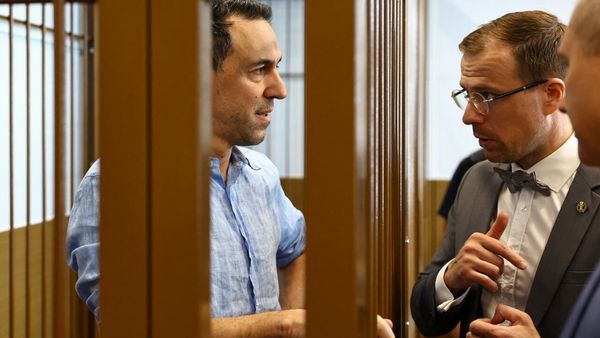
Lewis Hamilton took it on the chin when he was disqualified from the US Grand Prix after battling for an impressive second place in a race where he could have been in the hunt for a win. There was obvious disappointment but for his Mercedes team it also overshadowed the cautious optimism engendered in Austin, fuelled by hopes their latest upgrades had put them on the right track for bringing their car up to speed with the Red Bull next season.
After one of the most tense races of the season the truly telling and dispiriting moment for Hamilton and Mercedes came almost four hours after the flag had fallen. Having finished just two seconds off the world champion, Max Verstappen, and in with a shot at the win but for Mercedes’ strategy calls being found wanting, Hamilton was disqualified from second place after his car was found to have breached the rules on the wear allowed to the plank beneath the car.
Fine margins, as ever, were key at the US GP but in a sport where the regulations run long, to almost an arcane level of detail and are often open to interpretation, they had broken one that allows for no margin of error. It was an open and shut case.
F1 pushes technology to the limit but this rule is pleasingly simple. The teams must run a plank of glass-reinforced plastic beneath the car and after the race the wear on the plank cannot be more than 1mm. The purpose is simple too, it is designed to prevent them from running their cars too low, a limit imposed to maintain some control on the top speeds because the lower they run the quicker they can go.
In Texas Mercedes had arrived with their final major upgrade of the season, a new floor. With the cars generating ground effect downforce it is one of the most vital aerodynamic components in delivering grip and pace. It is the holy grail of this generation of cars that Red Bull have mastered so brilliantly. The better the aero design, the lower the car can run and the more downforce it can generate.
Hamilton, who has been open in his dissatisfaction with the Mercedes’ lack of grip, especially in high-speed corners, finally felt they had made a step up. He was enjoying much more confidence in the rear end of the car and was perhaps as optimistic as he has been about his ride in two years.
“We have a few races ahead and we don’t know how the car will be, but if we are in a position like this, and get the strategy right and the pit stops right, we can be racing for a win,” he said. “It was the first weekend I felt the upgrades work. The step we were able to take has given me more confidence in the car to throw it into the corners.”
Which would have boded well until the FIA got their rulers out. Four cars were selected for inspection: Hamilton and Ferrari’s Charles Leclercwere both disqualified, while Verstappen and McLaren’s Lando Norris were found to be compliant.
The track at the Circuit of the Americas is very bumpy which could have been a contributory factor as was the lack of practice running because it was a sprint race weekend which left Mercedes engineers with little data to decide ride height for a race on a full tank of fuel.
Mitigating factors perhaps but what Mercedes will really want to ascertain over the next few races will be whether the improvements they felt they have made were genuine or whether running the car at an illegally low height was a factor, in which case they cannot be considered a step forward.
Notably, Hamilton finished closer to Verstappen than he has all season but the Dutchman had brake issues and crucially was running the car at a higher ride height specifically because of concerns over plank legality. All of which may have flattered the Mercedes advance on their rivals.
Hamilton’s team can afford this level of foundering now, the car is still to an extent a test bed for next year’s model, but if they do manage to drag themselves into a title fight, a disqualification would be catastrophic. There are lessons learned then from Austin but questions too remain, Mercedes need to nail this down as soon as possible and their performance at the next two races in Mexico and Brazil will, they and Hamilton hope, provide the positive answers they need looking toward 2024.







